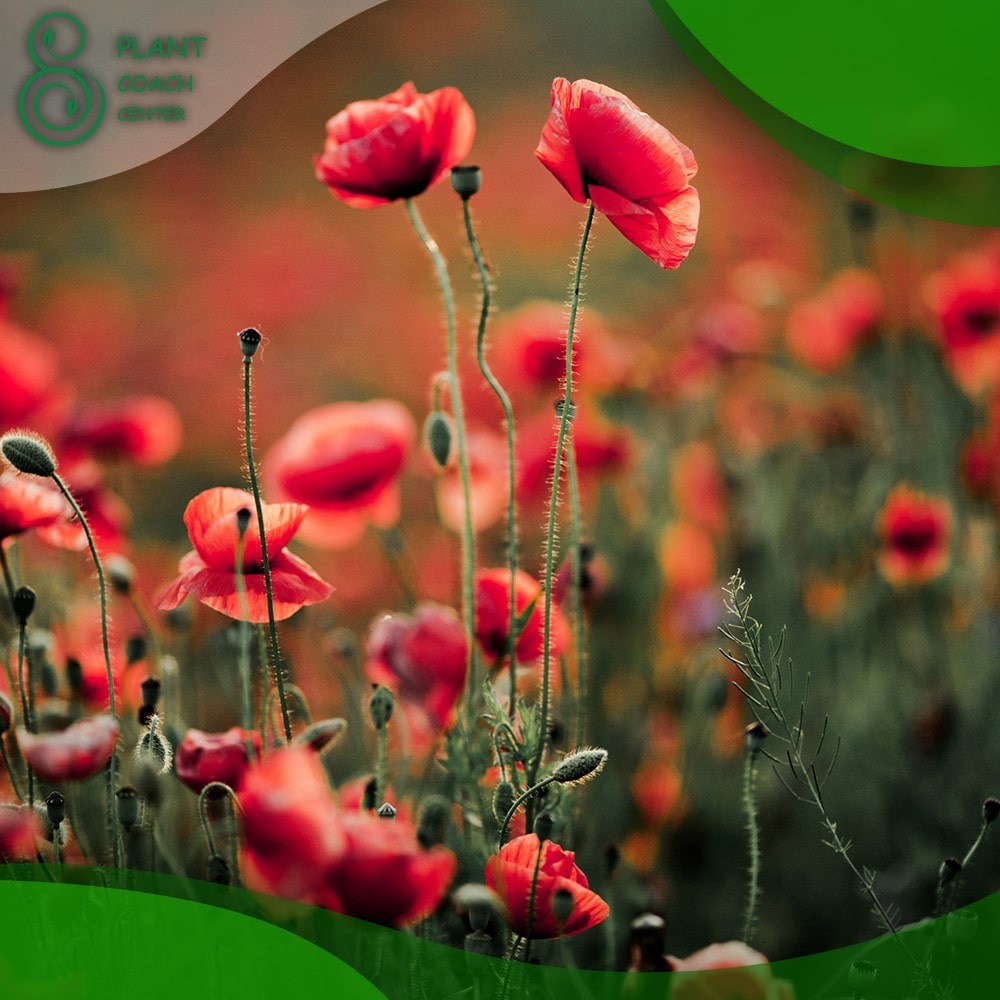When to Cut Back Poppies
Poppies, with their vibrant blooms and delicate petals, have long captured the hearts of gardeners worldwide. These stunning flowers add beauty to our landscapes and serve as a symbol of remembrance and hope. Proper pruning and maintenance are crucial to ensure the health and vitality of your poppy plants.
In this comprehensive guide, we will explore the art of poppy coaching, understanding the growth cycle of poppies, the benefits of pruning, signs that indicate pruning is needed, and, most importantly, when and how to cut back your poppies.
Understanding Poppies and Their Growth Cycle
Poppies come in various species and cultivars, each with its unique characteristics. From the iconic red Flanders poppy (Papaver rhoeas) to the stunning Oriental poppies (Papaver orientale) in shades of pink, purple, and white, these plants offer diverse options for garden enthusiasts.
Understanding the growth stages of poppies, from germination to flowering and seed production, is crucial for effective pruning and maintenance. Additionally, factors such as soil conditions, sunlight exposure, and climate play a vital role in poppy growth and development.
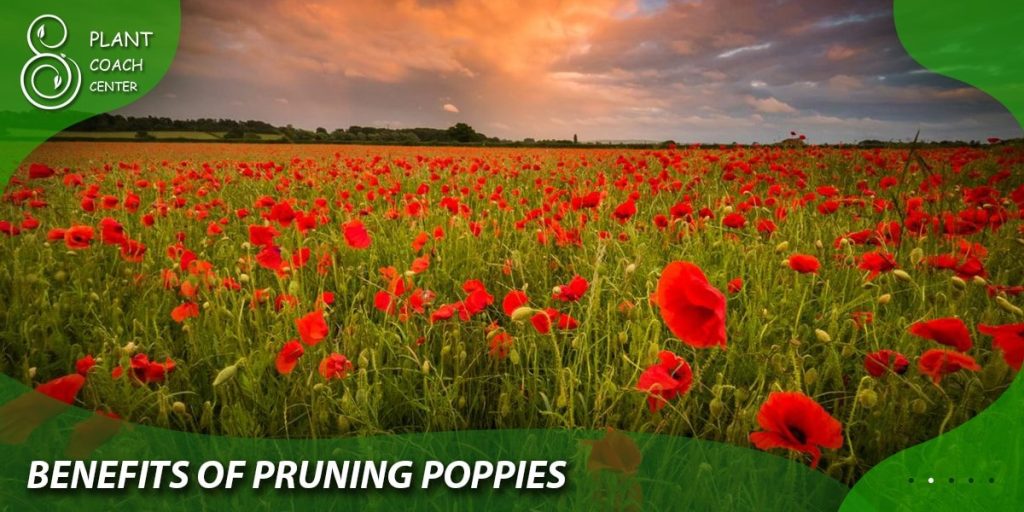
Benefits of Pruning Poppies
Pruning poppies offers a multitude of benefits that go beyond enhancing the visual appeal of your garden. Let’s delve deeper into the advantages of this essential practice:
Enhanced Plant Health
Pruning plays a vital role in maintaining your poppy plants’ overall health and vigour. Removing dead or diseased plant parts eliminates potential breeding grounds for pests and diseases. Proper pruning also improves airflow and sunlight penetration, reducing the risk of fungal infections and promoting better nutrient absorption.
Stimulated Growth and Blooming
Regular pruning stimulates new growth and encourages continuous blooming in your poppies. By removing spent flowers and seed pods, you redirect the plant’s energy towards producing more blooms rather than seed production. This practice, known as deadheading, not only prolongs the flowering period but also enhances the quality and size of the blooms.
Size and Shape Control
Pruning allows you to manage the size and shape of your poppy plants. This is particularly important if you have limited garden space or want to maintain a specific aesthetic. By selectively cutting back stems and branches, you can control your poppies’ height, spread, and density, ensuring they integrate harmoniously with other plants in your landscape design.
Disease Prevention
Poppy plants, like any other plants, are susceptible to diseases. Pruning helps prevent the spread of diseases by removing infected plant material and improving air circulation. When foliage is crowded and lacks airflow, it creates a humid environment that favours the growth of pathogens. Pruning opens the canopy, allowing air to circulate freely, reducing humidity and reducing the risk of fungal infections.
Aesthetic Appeal
Pruned poppies exhibit a tidier and more visually appealing appearance. Removing dead flowers and excess foliage helps maintain a neat and well-groomed look in your garden. Well-pruned poppies showcase their blooms more prominently, creating a focal point and adding charm and beauty to your outdoor space.
Encouraged Longevity
Pruning can extend the lifespan of your poppy plants. Removing old, tired growth and stimulating new growth can rejuvenate the plant and prevent it from becoming woody and unproductive. Regular pruning helps keep your poppies healthy, vibrant, and capable of producing abundant flowers for years.
Educational and Therapeutic Experience
Engaging in poppy coaching through pruning provides a unique opportunity to connect with nature and deepen your understanding of plant growth and development. It allows you to observe the intricate details of your poppies, learn about their unique characteristics, and develop a bond with your garden. Additionally, many gardeners find the act of pruning to be a therapeutic and stress-relieving activity that brings them closer to nature and promotes a sense of well-being.
Pruning poppies offers a range of benefits, including improved plant health, stimulated growth and blooming, size and shape control, disease prevention, enhanced aesthetic appeal, encouraged longevity, and a rewarding gardening experience. By incorporating proper pruning techniques into your plant care routine, you can optimize the health and beauty of your poppy plants while enjoying the numerous advantages that come with it.
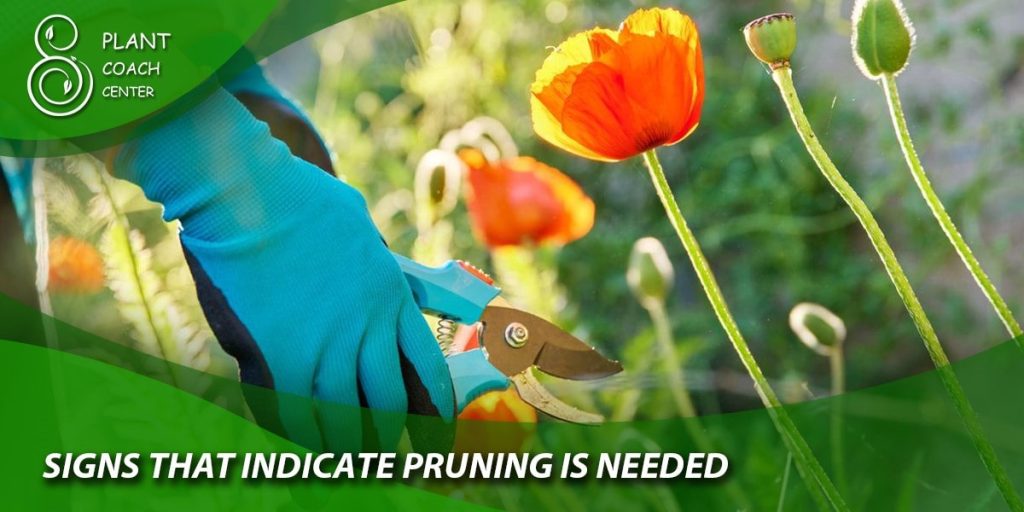
Signs That Indicate Pruning is Needed
Knowing when to prune your poppy plants is essential for maintaining their health and promoting optimal growth and blooming. Here are some key signs to look out for that indicate pruning is needed:
Leggy or Overgrown Appearance
If your poppy plants appear tall and leggy with elongated stems, it indicates that pruning is necessary. Overgrown poppies can become top-heavy and prone to bending or breaking, especially during strong winds or heavy rain. Selectively cutting back the stems can encourage bushier growth and a more compact, sturdy form.
Reduced Flowering or Sparse Blooms
If your poppies are not blooming as profusely as they used to or if the blooms are sparse and small, it may be a sign that pruning is needed. Poppies are vigorous plants that benefit from regular deadheading. Removing spent flowers and seed pods redirect the plant’s energy toward producing new blooms, resulting in a more abundant and vibrant display of flowers.
Disease or Pest Infestation
If you notice signs of disease or pests on your poppy plants, pruning can help mitigate the issue. Fungal infections, such as powdery mildew or leaf spot, can spread rapidly if left untreated. Removing infected plant parts prevents the disease from spreading to healthy areas. Similarly, suppose you spot pests like aphids or spider mites congregating on your poppies. In that case, targeted pruning can help eliminate the affected areas and minimize pest populations.
Yellowing or Discolored Foliage
Discolored or yellowing foliage on your poppy plants can indicate nutrient deficiencies, disease, or aging. Pruning can help revitalize plants by removing unhealthy or senescent foliage. This improves the plant’s appearance and redirects its resources toward producing new, healthy leaves.
Overcrowded Growth or Poor Air Circulation
When your poppies become crowded, with dense foliage and poor air circulation, it creates a conducive environment for diseases and pests to thrive. Suppose you notice that your poppies have become excessively bushy or tangled. In that case, it’s a sign that pruning is needed to open up the canopy and improve airflow. Proper pruning techniques, such as selectively removing stems and branches, allow light and air to penetrate the plant, reducing the risk of fungal infections and promoting overall plant health.
Seed Pod Development and Maturity
Once your poppy flowers have finished blooming, they develop seed pods. If you prefer to prevent self-seeding or want to redirect the plant’s energy toward producing more flowers, pruning after seed pod maturity is necessary. Removing the spent seed pods not only tidies up the plant but also stimulates new growth and encourages the production of additional blooms.
Vigor and Growth Habit
Observing your poppy plants’ overall vigour and growth habit is crucial in determining when pruning is needed. If your poppies appear weak, with stunted growth or thin stems, pruning can help promote healthier and more robust growth. Additionally, suppose your poppies are spreading beyond their desired boundaries or encroaching on neighbouring plants. In that case, pruning can help manage their size and prevent overcrowding.
By paying attention to these signs, you can proactively identify when pruning is necessary for your poppy plants. Regular observation and timely pruning will help maintain your poppies’ health, appearance, and productivity, ensuring a beautiful and flourishing garden.
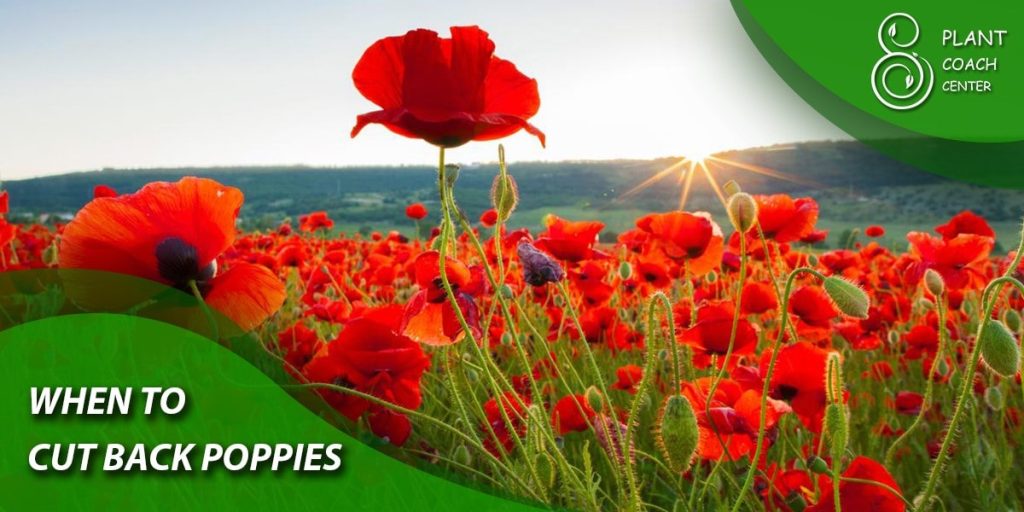
Timing: When to Cut Back Poppies
Spring Pruning
Spring is a crucial time for poppy pruning. As the weather warms up and new growth emerges, it’s an ideal opportunity to shape and rejuvenate your plants. For early spring-blooming poppies, such as Icelandic (Papaver nudicaule), pruning should be done immediately after blooming to encourage a second round of flowering. Other poppy varieties, like Oriental poppies, are best pruned in early spring to remove old foliage and prepare them for their summer bloom. Use clean, sharp pruners to cut back stems to ground level, ensuring healthy regrowth.
Summer Pruning
During the summer months, it’s important to maintain the shape and appearance of your poppies. Regular deadheading, the removal of spent flowers, will stimulate continuous blooming and prevent seed production. As the summer progresses, some poppy varieties may show signs of decline, such as yellowing leaves or diminished vigour. In such cases, light pruning can help revitalize the plants. Focus on removing diseased or damaged foliage, allowing for better airflow and reducing the risk of infections.
Fall/Winter Pruning
Fall and winter pruning primarily involves tidying up your poppy plants in preparation for the dormant season. As the leaves turn yellow and the plants naturally die back, removing any remaining foliage is essential to prevent the spread of diseases and pests. However, exercise caution during fall pruning, as some poppy species, such as California poppies (Eschscholzia californica), are considered winter annuals and should be left in place to self-seed for the following year’s growth.
Step-by-Step Guide: How to Properly Prune Poppies
Pruning poppies require careful attention and proper techniques to ensure the health and vitality of the plants. Follow this step-by-step guide to effectively prune your poppies:
Assessing the plant’s condition
Before you begin pruning, closely examine your poppy plants. Identify any signs of decline, disease, or overgrowth. Look for spent flowers, yellowing or discoloured foliage, signs of pests, or any damaged or diseased branches. This assessment will help you determine the extent of pruning required.
Removing spent flowers and seed pods
Begin by deadheading your poppies. Cut off the spent flowers just above a leaf node or lateral bud using clean and sharp pruning shears or scissors. Removing the spent flowers improves the plant’s appearance and redirects its energy toward producing new blooms.
Trimming back excess foliage
If your poppies have become leggy or have excessive foliage, selectively trim the stems. Use clean and sharp pruners to make cuts just above a leaf node or lateral bud. Focus on removing the longest and weakest stems to encourage bushier growth and maintain a more compact form.
Pruning for desired shape and size
Prune your poppies to achieve the desired shape and size. If your plants spread beyond their intended boundaries, selectively remove the outer stems to keep them in check. If you want a more compact appearance, prune the outer branches to encourage a fuller and more rounded form. Aim for a balanced and symmetrical shape while maintaining the natural beauty of the poppies.
Proper disposal of pruned material
As you prune, collect and dispose of the pruned plant material properly. Suppose the material shows signs of disease or pests. In that case, it’s essential to discard it to prevent further contamination. Bag and dispose of infected or pest-ridden material in the trash. If the pruned material is healthy, you can compost it if desired.
Additional Tips:
- Always use clean and sharp pruning tools to make precise and clean cuts. Disinfect your tools before and after each use to prevent the spread of diseases. A solution of one part bleach to nine parts water can be used for tool sterilization.
- Avoid over-pruning, as it can stress the plant and inhibit its growth. Never remove more than one-third of the plant’s foliage at a time.
- Prune poppies during the appropriate season based on the specific guidelines discussed earlier in the article. Pruning at the right time ensures the plants are in the best condition to respond to the pruning cuts.
Remember, each poppy variety may have specific growth habits and pruning requirements, so you must familiarize yourself with the particular needs of the poppy species or cultivar you are working with.
By following these step-by-step instructions and incorporating proper pruning practices, you can maintain your poppy plants’ health, appearance, and productivity. Regular pruning will promote vigorous growth and abundant blooming and ensure your poppies remain a stunning highlight in your garden.
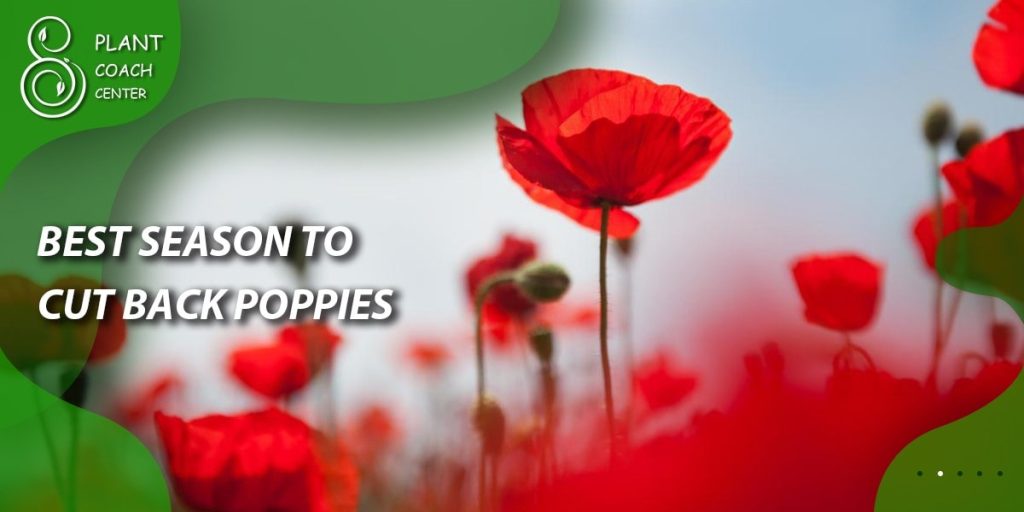
Common Mistakes to Avoid When Pruning Poppies
Pruning poppies is a valuable practice that contributes to the overall health and appearance of the plants. However, it’s important to be mindful of common mistakes that can inadvertently harm your poppies. Avoiding these errors will help ensure successful pruning and promote the long-term well-being of your plants. Here are some common mistakes to be aware of:
- Over-Pruning: One of the most common mistakes gardeners make is over-pruning their poppies. Removing excessive foliage or cutting back beyond healthy buds can stress the plants and inhibit their growth. It’s essential to strike a balance and avoid removing more than one-third of the plant’s foliage at a time. Prune selectively, focusing on removing spent flowers and damaged or diseased branches and promoting overall plant health without excessively reducing leafy growth.
- Improper Timing: Pruning at the wrong time of year can disrupt the natural growth cycle of poppies. Different poppy varieties have specific timing requirements for pruning, as discussed earlier in the article. Pruning outside the recommended seasons can result in diminished blooming, delayed growth, or even plant damage. Always follow the appropriate timing guidelines for your poppy species to ensure optimal results.
- Pruning During Extreme Temperatures: Pruning poppies during extreme heat or cold periods can be detrimental to their health. High temperatures can stress the plants and make them more susceptible to damage. Similarly, pruning during freezing temperatures can cause injury to the plant tissue. It’s best to avoid pruning during extreme weather conditions and choose mild, temperate days for this task.
- Neglecting Tool Hygiene: Pruning tools that haven’t been properly cleaned and disinfected can spread diseases from one plant to another. Fungal spores and bacteria can cling to pruning tools and, if not sanitized between uses, can transfer to healthy plants during pruning. Before and after each pruning session, disinfect your tools with a solution of one part bleach to nine parts water or a suitable horticultural disinfectant to minimize the risk of disease transmission.
- Pruning Unhealthy Plants: Pruning should generally be avoided on severely stressed or unhealthy poppy plants. If your poppies are already weakened due to pests, diseases, or environmental factors, pruning can further stress them. Instead, focus on addressing the underlying issues causing the decline in plant health before considering pruning.
- Neglecting Safety Precautions: Pruning involves working with sharp tools, so it’s crucial to prioritize safety. Wear appropriate protective gear, such as gloves and safety glasses, to prevent injuries. Take care when handling and operating pruning tools to avoid accidental cuts or other mishaps. Additionally, be cautious of your body positioning to prevent strains or falls while reaching or balancing on ladders or unstable surfaces.
- Ignoring the Plant’s Natural Form: While pruning is important for maintaining the shape and size of your poppy plants, it’s essential to respect their natural growth habit. Avoid excessively altering the plant’s form or removing too many branches, resulting in an unnatural or unbalanced appearance. Prune selectively and aim to enhance the plant’s natural beauty rather than forcing it into a desired shape that is not in harmony with its inherent growth patterns.
By avoiding these common mistakes, you can ensure that your pruning efforts are effective and beneficial for your poppy plants. Proper pruning practices, combined with attentiveness and care, will contribute to your poppies’ long-term health and vitality, allowing them to thrive and enchant with their vibrant blooms.
Troubleshooting Common Poppy Problems
Despite your best efforts, poppies may encounter various issues. Common problems include fungal infections like powdery mildew, pests such as aphids or slugs, and nutrient deficiencies. Proper pruning techniques can help mitigate these problems by improving airflow, removing infected plant parts, and promoting overall plant health. If issues persist, consider seeking advice from a local garden center or a professional horticulturist.
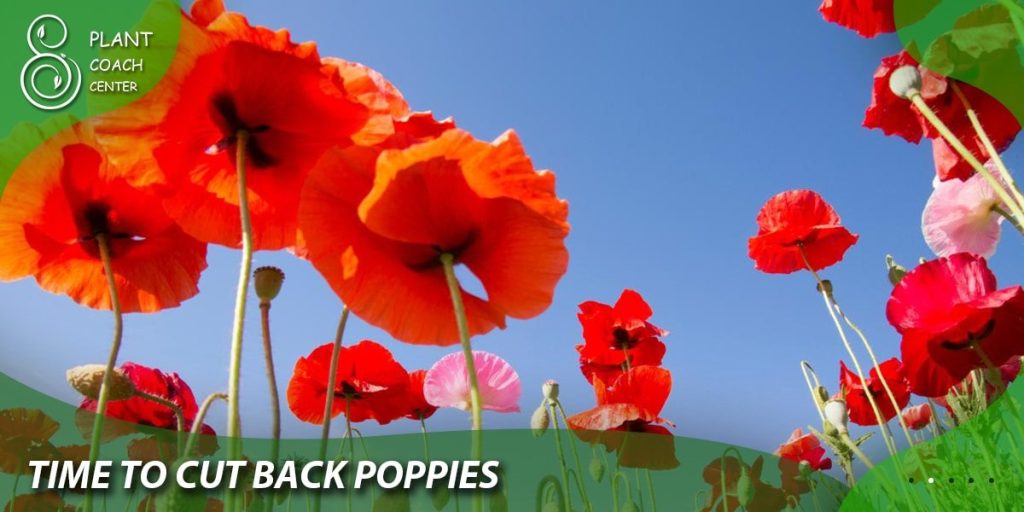
Conclusion
By understanding the growth cycle of poppies and following proper pruning practices, you can ensure the health, vitality, and stunning beauty of these remarkable flowers. Whether timing your pruning based on the season, using the right techniques, or troubleshooting common problems, your efforts will be rewarded with vibrant, flourishing poppy plants. Embrace the art of poppy coaching, and let your garden bloom with the timeless allure of these enchanting flowers.
When is the best time to prune poppies?
Spring or early summer.
How much foliage should I remove when pruning poppies?
Avoid removing more than one-third of the plant's foliage.
Can I prune poppies during extreme temperatures?
It's best to avoid pruning during extreme heat or cold.


